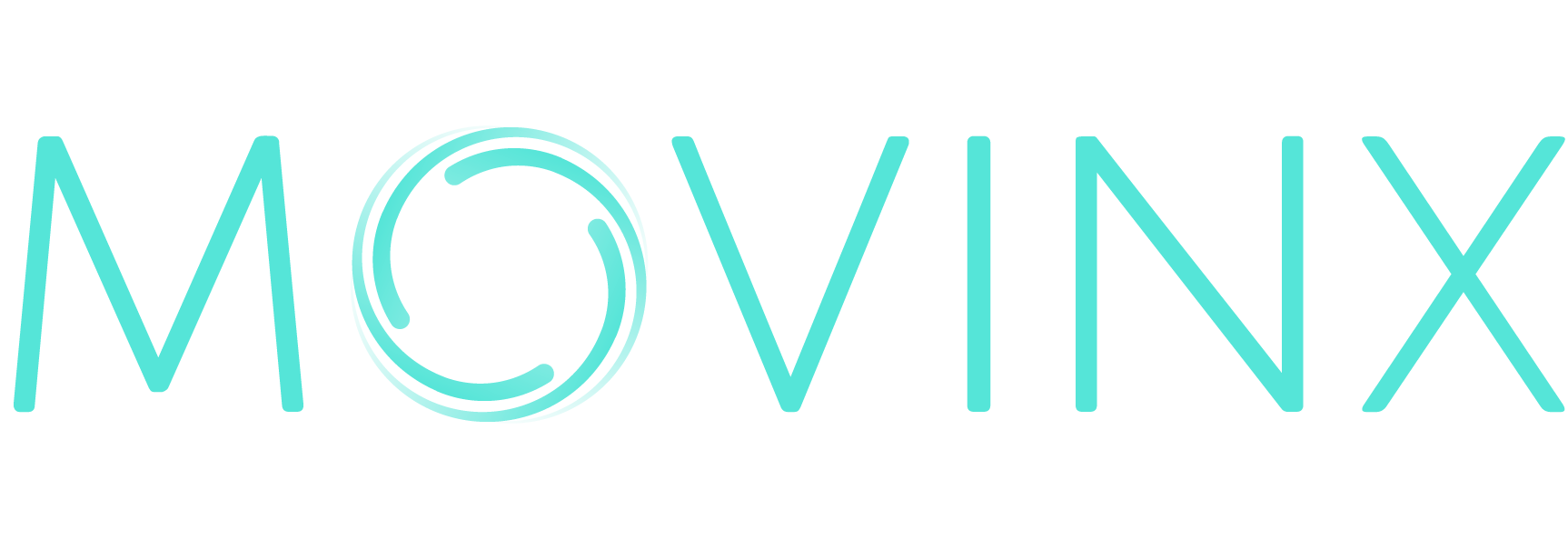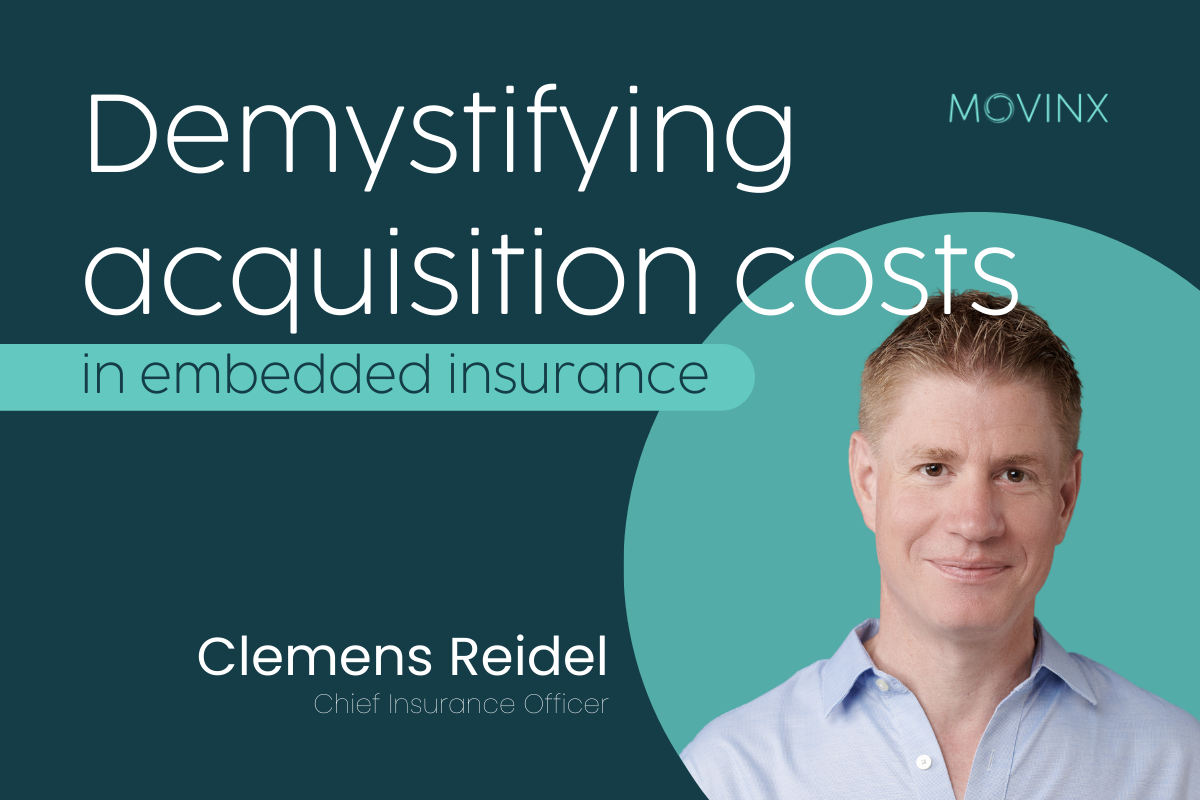Demystifying acquisition costs in embedded insurance
By Clemens Reidel, Chief Insurance Officer
Acquisition costs.
Imagine if auto insurers had no cost to acquiring new clients. That’s the exact direction we’re driving things for auto insurance at Movinx. Integrated – or embedded – auto insurance is the shake-up that will make this happen.
How did we get here?
When cars began transforming the world, auto insurance providers were hot on their heels. Since then, we’ve gone through four main journeys for acquiring car insurance – with expense to insurance providers to match.
From a physical agent or broker:
The original way of buying car insurance (and in some markets, such as the US, it’s still the go-to process for car insurance sales). Until online sales blew up, car owners worked directly with agents. A good agent could have billboards up around town, is integrated in the local community, and comes with personal referrals from friends and family. Customers appreciate the personal relationship and trust, but can have little say in their premiums or the car insurance policy they were saddled with. If they want to compare their family agent to another agent in town, they have to do so on their own time.
For this channel, acquisition costs can be extremely high – often linked to marketing (especially brand creation), advertising, and the agent’s efforts for when signing on new and supporting existing clients.
Online direct insurers:
Enter the internet. Here, insurers were given the opportunity to directly interact with customer, in some cases, cutting off physical agents from the sales process and reducing customer acquisition costs.
In theory, because there are also challenges with online sales: How to get customers in the online channel was and still is a main challenge for direct insurance companies (remember: also marketing costs should be considered as distribution costs). Many insurers had to invest a lot into creation of “convenient” and “self-explaining” online journeys (surprise, surprise dear direct insurers: The above-mentioned agents were doing something for their money, e.g. addressing customers at the right time and educating them on the product).
Online price-comparison:
Online sales on steroids: Price comparison tools that compared different providers’ policies and prices became accessible for all drivers. When buying a car, drivers just had to run a quick price comparison search, and then choose their provider. This squeezed many competing insurance providers onto the same page, and forced them into price wars to gain new customers. It was less personal for the driver, but offered the policy of a better price – still at the cost of hours providing necessary data and comparing policies.
Acquisition costs for insurers remained high; discounts offered by companies in order to stay competitive when faced with price comparison platforms combined with high acquisition costs and disloyal customers ate into their profits. In addition, it forced insurance companies to come up with new tariff models for each new acquisition “season” to offer attractive premium levels for new incoming customers.
Integrated or embedded car insurance:
The future. Choosing a car insurance policy has become an box to tick before driving off in a new car. Consumers don’t want to spend hours comparing possible policies or to provide dozens of data points. They want a car insurance policy adapted to their needs, without any hassle. According to the customer type and based on data available from the car leasing/purchasing journey, the customer is categorized and offered a policy adapted to his/her needs and driving history.
Acquisition costs for insurance providers can fall drastically in this model because there is no need for advertising nor training or marketing material. With the right data utilization and portfolio management a healthy portfolio can be built as the convenience for the customer decreases the need for discounts. This is especially the case the stronger the brand of the car manufacturer is. Creating huge insurance portfolios with embedded insurance, car companies will also benefit more from customer loyalty and after sales business, which might even lead to a string decrease of commission costs (potentially even to zero, depending on the strategy of the OEM).
What embedded insurance looks like.
Embedded car insurance happens when a car manufacturer (OEM) partners with an insurance provider to improve customer experience, among other things. They do this, by together using available data to make the quote and bind sale invisible (and even claims, repairs, maintenance, among other key services). The field is new, and so far, insurance providers tend to be local to specific markets.
A fully integrated customer journey is both market-compliant and customized. Customization is important. It considers the specifics of the vehicle that the specific customer is purchasing and how it – and the driver – can be best protected.
A consideration insurers need to keep front of mind is that: customers also need the right insurance, not just “insurance”. If the partnership is done well, this can be achieved with a few simple questions at the point of sale. And if it is done optimally, this can be achieved without any further questions at all! (Although, we are probably a little ways away from this one, given the different regulatory needs of different markets).
If customers purchase a premium vehicle, they want to know this investment is fully protected. If they have an accident they want to know they are fully covered at the moment of truth. In this context, fully bespoke, embedded insurance for the vehicle and the driver is the future.
New possibilities.
For insurers, a fully integrated journey at the point of sale means… well, bliss. They can do the work upfront – in the backend with OEMs – with a small, specialized team, identifying what drivers could need for the specific vehicle experience. Once they press play – they can go on to others things: developing innovative products and re-directing acquisition resources to improving after-sales systems.
The resources freed up by lowering acquisition costs for insurance companies are enormous: advertising, face-to-face client meetings with long product explanation and calculation in the sales process, and the race to the bottom of discounts will practically disappear.
In exchange, insurers can redirect their resources towards developing new collaborations with car manufacturers and mobility providers to leverage the potential of connected vehicles and accident prevention/recovery, e.g. accelerate their research and development of new safety algorithms and risk assessment analysis and by that create real customer value instead of thinking about the next marketing campaign.
The future mobility customer will need a whole range of different things from their mobility partners than they do today. Insurers cannot keep acquiring them in the same way they’ve always done: it doesn’t make sense for the bottom line and it doesn’t allow them the space to innovate – which is what the whole sector will need to stay relevant.
Movinx as a facilitator.
Integrated insurance doesn’t happen overnight and that is why Movinx exists. We are the bridge between OEMs and insurance providers, helping them to provide a seamless insurance experience for drivers. If you want to learn more about how we work, check out our other articles, filled with our team’s knowledge.
Related Posts
At the wheel in real time
Because more and more data can be collected individually and in real time, insurers are facing major changes. The greatest opportunities will open up in the near future for car insurers, but providers must know how to use them.
Car manufacturers and car insurance: an unlikely pairing?
The customer not thinking about car insurance, is the future of car insurance. Here’s how we’re making that happen:
The virus as a digital booster
As in other industries, the pandemic has also triggered a boost in the digitalization of processes and products in the insurance industry.
The tipping point: Are automotive OEM’s finally taking the wheel on insurance?
Automotive OEM insurance has recently evolved. Despite challenges around price competition across diverse customer groups – and simultaneously across US 50 states – OEMs have been working through a range of models to merge the two sectors (insurance and automotive), with an aim to make insurance part of the car purchase journey. This analysis describes thre





